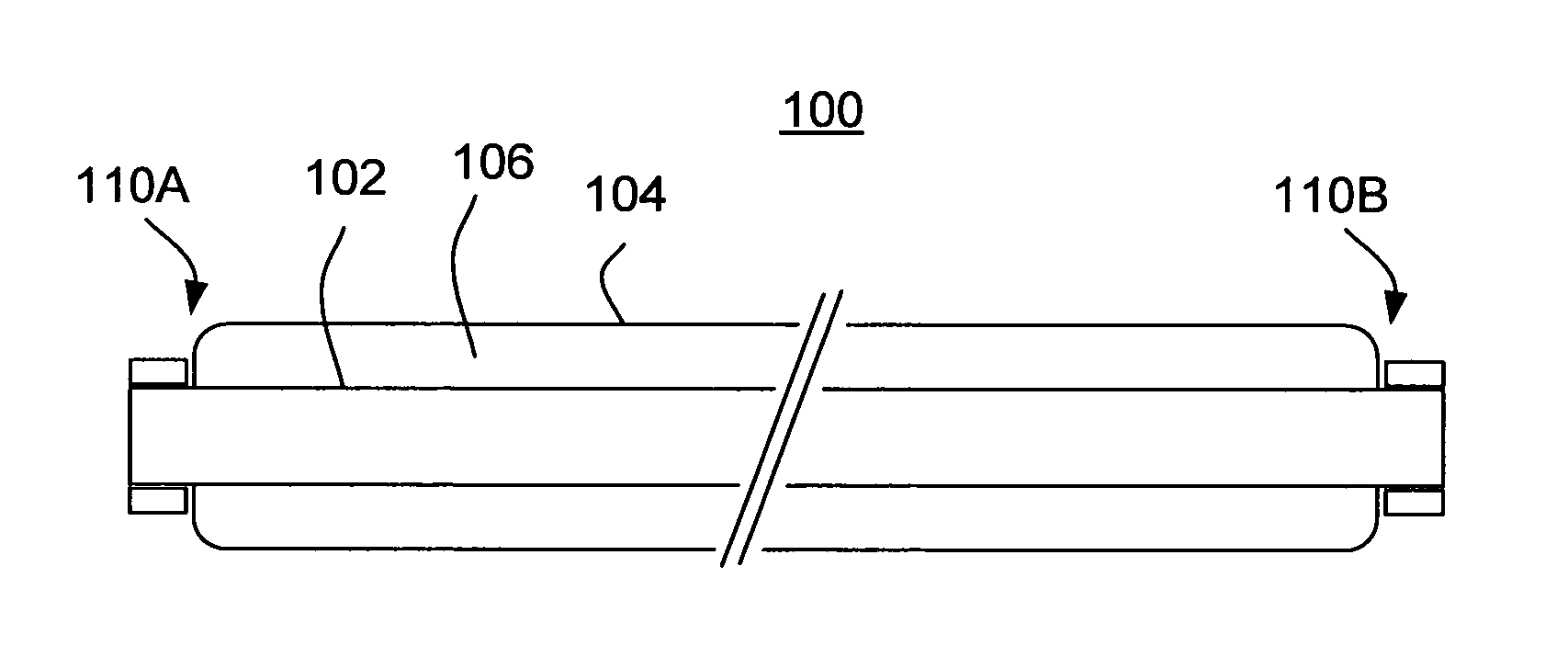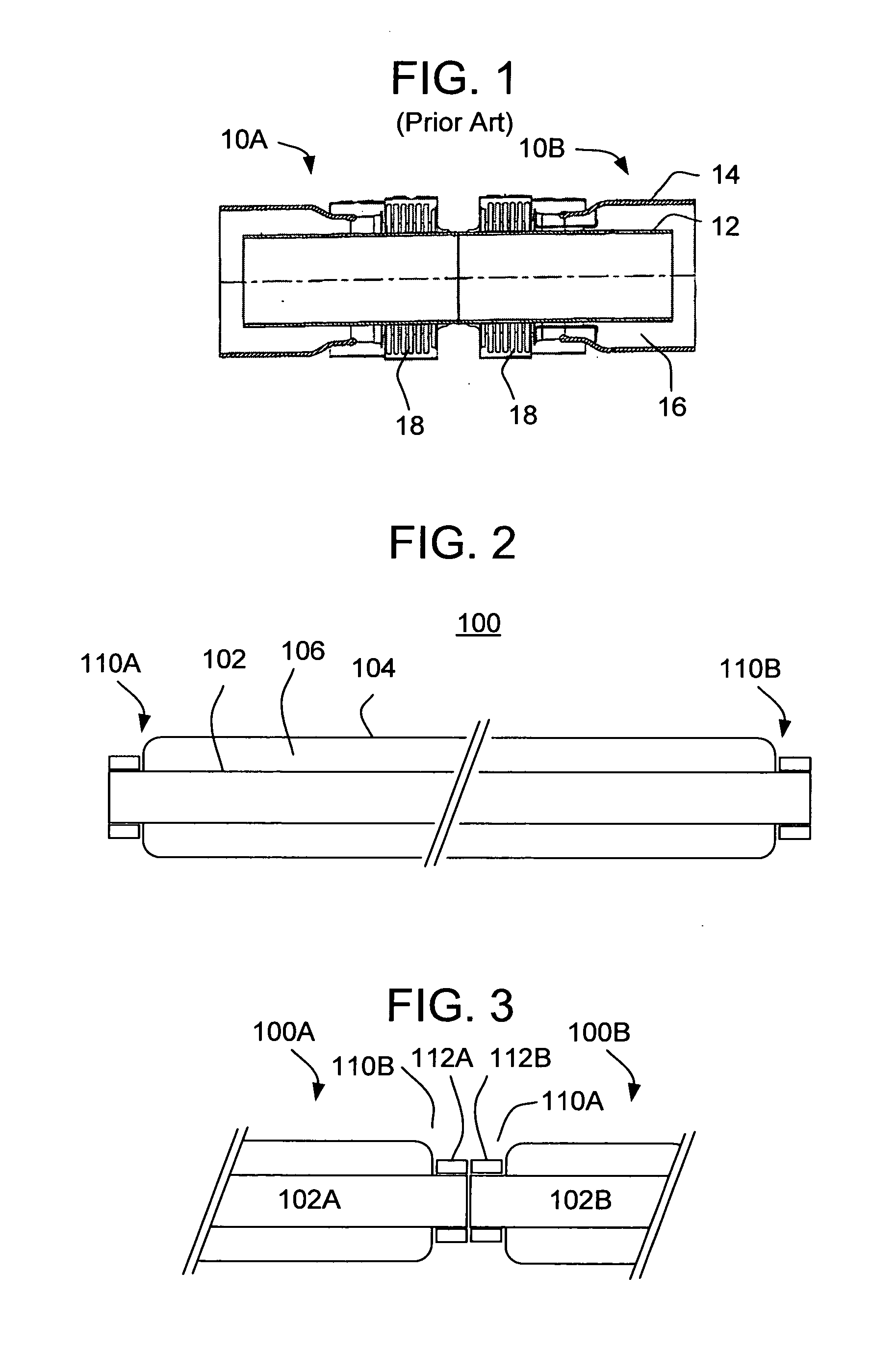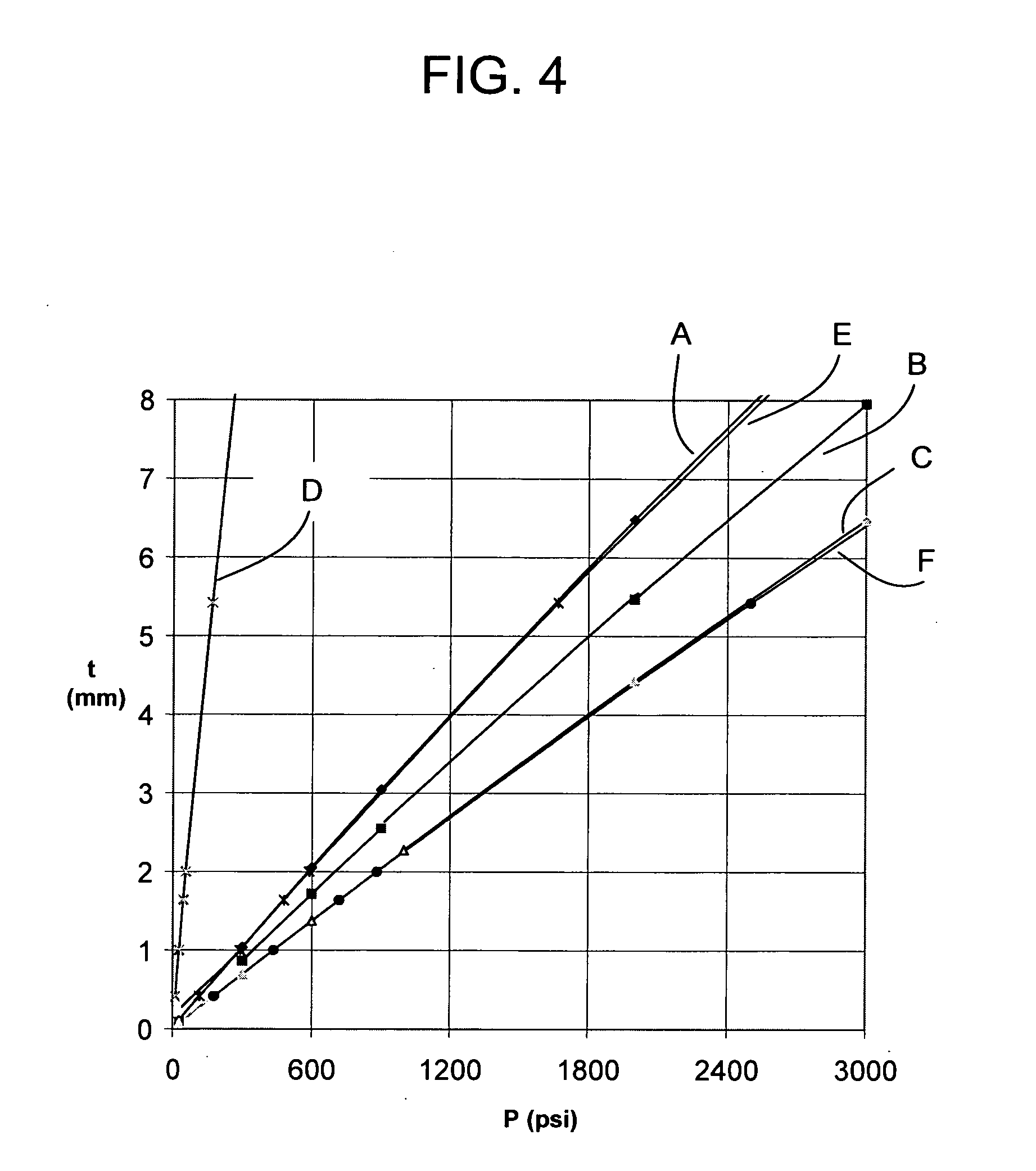Solar heat collection element with glass-ceramic central tube
a technology of solar heat collection and central tube, which is applied in the safety of solar heat collectors, solar heat collector details, light and heating apparatus, etc., can solve the problems of excessively high complexity of bellows mechanism, corrosion, and heat loss through the bellows mechanism, and achieves the effect of reducing operating temperature limits and reducing stress
- Summary
- Abstract
- Description
- Claims
- Application Information
AI Technical Summary
Problems solved by technology
Method used
Image
Examples
Embodiment Construction
[0031]With reference to the drawings, wherein like numerals indicate like elements, there is shown in FIG. 2 a solar heat collection element (HCE) 100, which includes a central tube 102 formed from glass-ceramic material, and an outer tube 104 formed from glass material. The outer tube 104 is disposed coaxially with respect to the central tube 102 to form a volume 106 therebetween. The configuration of the central tube 102 and the outer tube 104 are preferably cylindrical, thereby yielding a cylindrical shaped space 106 (with a ring-shaped cross section).
[0032]Among the differences between the HCE 100 of the present invention and the HCEs of the prior art is the use of the central tube 102 formed from glass-ceramic material, as opposed to stainless steel. The outer tube 104 may be formed from a suitable glass, such as a borosilicate glass available from Corning Incorporated. Advantages of such a structure include: lower parts count and simplified assembly; greatly reduced hydrogen p...
PUM
| Property | Measurement | Unit |
|---|---|---|
| wavelengths | aaaaa | aaaaa |
| thickness | aaaaa | aaaaa |
| thickness | aaaaa | aaaaa |
Abstract
Description
Claims
Application Information
 Login to View More
Login to View More - R&D
- Intellectual Property
- Life Sciences
- Materials
- Tech Scout
- Unparalleled Data Quality
- Higher Quality Content
- 60% Fewer Hallucinations
Browse by: Latest US Patents, China's latest patents, Technical Efficacy Thesaurus, Application Domain, Technology Topic, Popular Technical Reports.
© 2025 PatSnap. All rights reserved.Legal|Privacy policy|Modern Slavery Act Transparency Statement|Sitemap|About US| Contact US: help@patsnap.com



